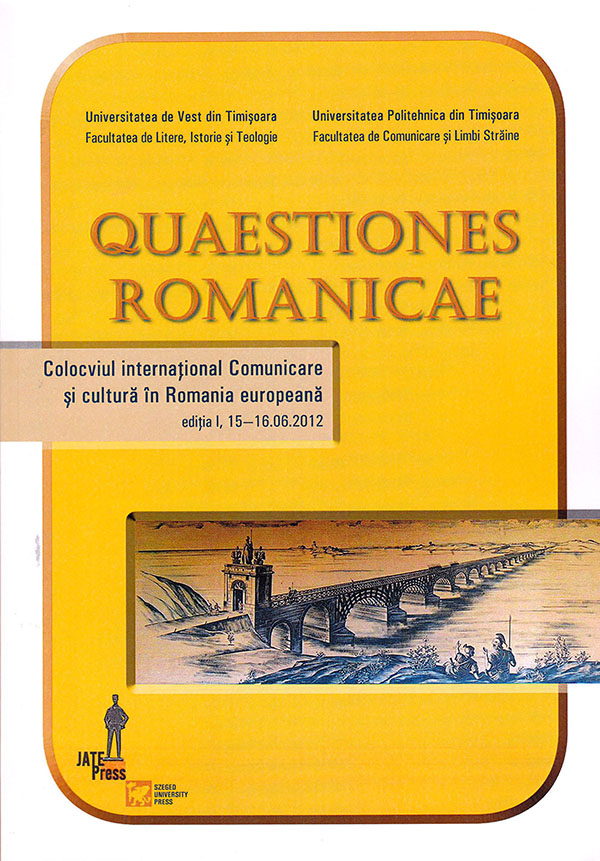Tradiţie şi inovaţie în limbajul gastronomic românesc din secolul al XIX- lea. Un exemplu de traducere
Abstract: The 20th century stands out as the period when the evolution of the Romanian language gained momentum and is marked by the attempt to modernize Romanian through grammar books and theoretical writings, and especially through literary works. The contact with the French language and literature plays a special role in this process because it represents a source for enriching Romanian with new words that would gradually become elements of the standard language. Several works are published during this period and they show a growing interest in various areas of culture, among which gastronomy. Negruzzi and Kogălniceanu’s cookbook, 200 de reţete cercate de bucate, prăjituri şi alte trebi gospodăreşti, edited in Iaşi in 1841, is so successful that two other editions will appear in 1842 and 1846. Another example of this tendency is the translation of a French cookbook, published in Iaşi around the same period: Reţete cercate în număr de 500 din bucătăria cea mare a lui Robert întiul bucătar a Curţii Franţiei, potrivit pentru toate stările. Tradus de Post. Manolache Drăghici. This translation, written by chamberlain Manolache, is remarkable due to the unique and creative ways of finding the Romanian equivalents to specific terms it displays. This book is the object of the present study. We will try to see to what extent the suggested translation is in tune with the gastronomic language of the period as it appears in Negruzzi and Kogălniceanu’s book, and to consider the originality of some words, the balance between the Romanian term and the borrowed one and decide if these variants are still adequate for contemporary readers.
Keywords: translation, gastronomy, language history, civilisation, French influence.
Rezumat: Secolul al XIX-lea se remarcă printr-un avânt deosebit în dezvoltarea limbii române şi printr-o încercare de modernizare a acesteia atât prin gramaticile şi scrierile teoretice, cât mai ales prin producţia literară a vremii. Un rol deosebit în acest sens îl are contactul cu limba şi literatura franceză care constituie surse de îmbogăţire a limbii cu cuvinte noi ce vor intra încetul cu încetul în limbajul curent. Apar acum preocupări şi scrieri în domenii dintre cele mai diverse, printre care şi gastronomia. Cartea de bucate a lui Negruzzi şi Kogălniceanu intitulată 200 de reţete cercate de bucate, prăjituri şi alte trebi gospodăreşti editată la Iaşi în 1841 cunoaşte un asemenea succes încât vor apărea încă două ediţii în 1842 şi 1846. La acestea se adaugă o traducere a unei cărţi de bucate franţuzeşti apărută tot la Iaşi în aceeaşi perioadă intitulată Reţete cercate în număr de 500 din bucătăria cea mare a lui Robert întiul bucătar a Curţii Franţiei, potrivit pentru toate stările.Tradus de Post. Manolache Drăghici. Această traducere a Postelnicului Manolache, ce se remarcă prin soluţii originale în găsirea echivalenţelor termenilor specifici în română va constitui obiectul studiului nostru. Vom încerca să vedem în ce măsura traducerile propuse se încadrează în limbajul gastronomic al vremii aşa cum apare el în cartea lui Negruzzi şi Kogălniceanu, originalitatea unor termeni, echilibrul dintre termenul românesc şi cel împrumutat şi pertinenţa acestor variante pentru cititorul zilelor noastre.
Cuvinte-cheie: traducere, gastronomie, istoria limbii, civilizaţie, influenţă franceză.
